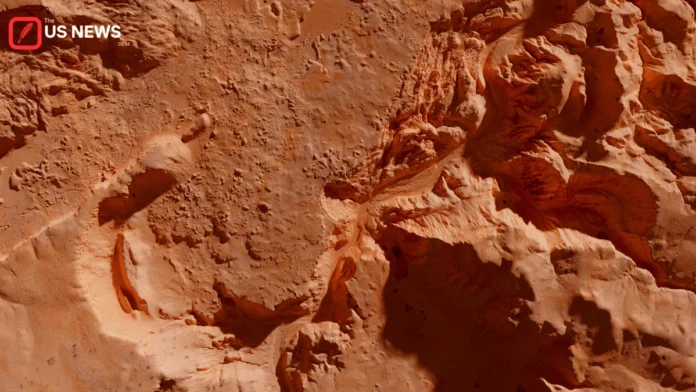Scientists studying data from NASA’s Perseverance rover have uncovered compelling evidence that Jezero Crater, an ancient lakebed on Mars, hosts complex interactions between minerals and organic molecules that appear to be driven by redox (reduction-oxidation) processes. This discovery is intensifying scientific debates about whether Mars once sustained life and how its geochemical environment shaped the preservation of organic compounds.
The Role of Jezero Crater in Mars Exploration
Jezero Crater was chosen as Perseverance’s landing site in 2021 because of its well-preserved river delta, which scientists believe once carried water and sediment into a standing lake. These deposits, rich in clay minerals, carbonates, and sulfates, have long been considered prime targets for detecting traces of ancient life.
Now, with new findings showing redox-driven mineral and organic associations, researchers say the crater may hold answers not only about Mars’ past habitability but also about how organic material interacts with planetary surfaces in harsh environments.
What Are Redox-Driven Associations?
Redox processes involve the transfer of electrons between molecules and minerals, a fundamental mechanism that drives chemical reactions both on Earth and, potentially, elsewhere. On Earth, such reactions are crucial for life — from microbial metabolism to large-scale geochemical cycles.
In Jezero Crater, scientists found that certain minerals appear to bond with organic molecules in ways strongly influenced by redox conditions. This suggests that Mars once had dynamic environments where chemical gradients could have supported prebiotic chemistry — or even microbial life.
“The preservation of organic compounds in Jezero seems to be linked to mineral structures that underwent redox reactions,” explained Dr. Linda Kah, a geochemist involved in the study. “That’s significant, because it hints at chemical energy sources that could sustain biology.”
The Perseverance Rover’s Key Observations
Perseverance, equipped with instruments such as SHERLOC (Scanning Habitable Environments with Raman & Luminescence for Organics and Chemicals) and PIXL (Planetary Instrument for X-ray Lithochemistry), has been detecting carbon-based molecules embedded in Martian rocks.
Recent analysis shows:
- Organic molecules bound to iron oxides and clays that suggest interactions under changing redox states.
- Spatial distribution of carbon compounds that correlates with minerals formed in aqueous environments.
- Evidence of episodic wet and dry cycles, reinforcing the idea that Jezero once experienced fluctuating conditions favorable to organic preservation.
Why This Matters for Astrobiology
The preservation of organics in redox-active minerals increases the likelihood that biosignatures — chemical fingerprints of past life — could survive for billions of years in Martian rocks. If life ever existed on Mars, such environments may be the best places to detect traces of it.
“This discovery moves us closer to answering one of humanity’s biggest questions: Are we alone?” said Dr. Luther Beegle, lead scientist for SHERLOC at NASA’s Jet Propulsion Laboratory.
Preparing for Mars Sample Return
Perhaps most importantly, these samples are being cached by Perseverance for a future Mars Sample Return mission, which aims to bring Martian rocks back to Earth in the early 2030s. Laboratory analysis on Earth will allow far more detailed study of organic compounds and their mineral associations than rover instruments can achieve on Mars.
NASA scientists emphasize that while the presence of organic molecules does not prove life, it greatly strengthens the case for continued exploration.
Broader Implications for Planetary Science
The findings also inform comparative planetology. On Earth, redox-driven mineral-organic interactions play a role in the deep carbon cycle and the preservation of ancient biosignatures. Understanding similar processes on Mars may help scientists refine strategies for detecting life beyond our planet, including on icy moons like Europa and Enceladus.
The Road Ahead
Perseverance will continue drilling and collecting samples from Jezero’s delta, while mission scientists refine their models of how water, rock, and organics interacted on ancient Mars. The rover’s next targets include carbonate-rich outcrops believed to hold additional clues about the planet’s past climate and chemistry.




